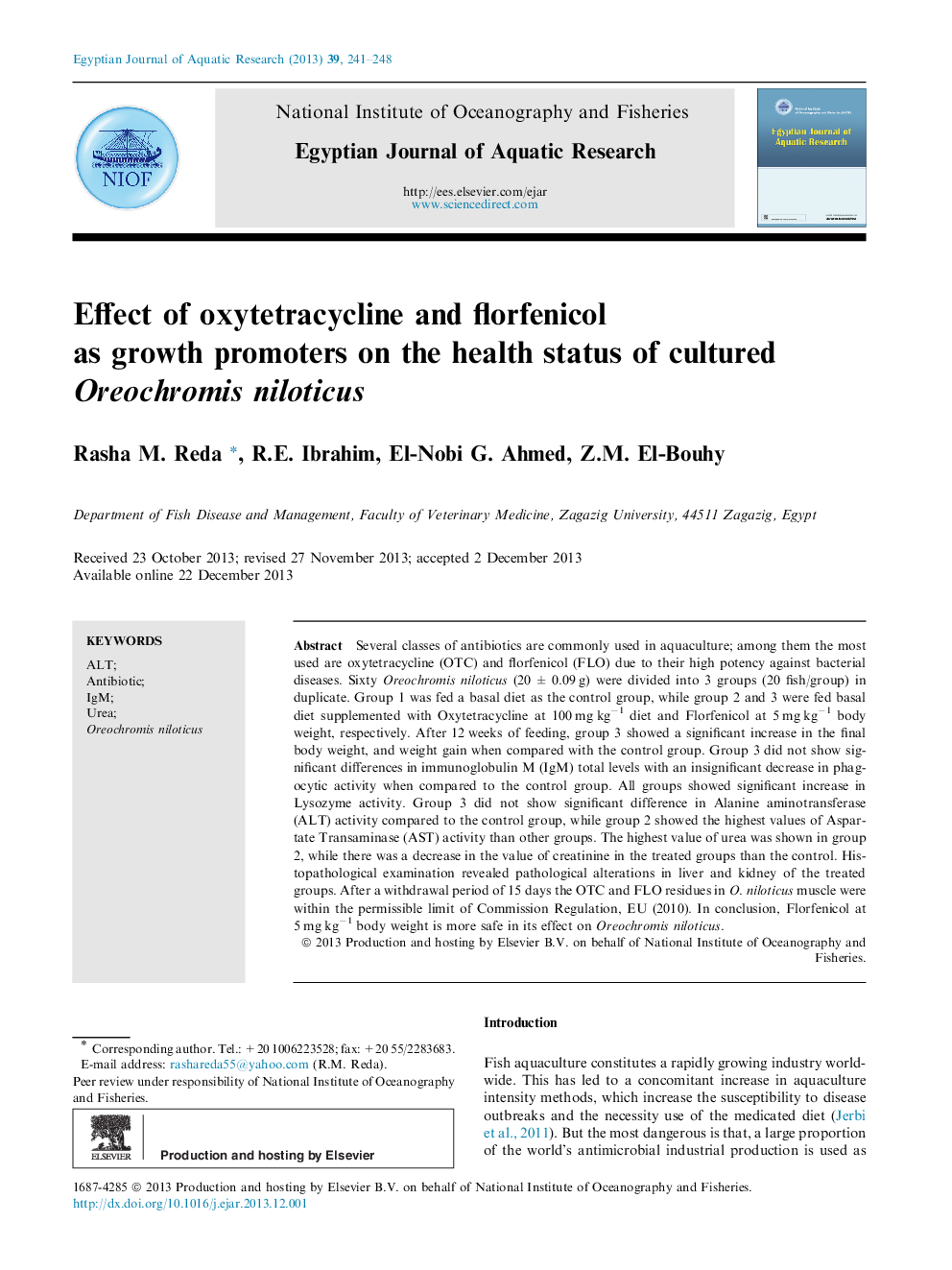| Article ID | Journal | Published Year | Pages | File Type |
|---|---|---|---|---|
| 4493143 | The Egyptian Journal of Aquatic Research | 2013 | 8 Pages |
Several classes of antibiotics are commonly used in aquaculture; among them the most used are oxytetracycline (OTC) and florfenicol (FLO) due to their high potency against bacterial diseases. Sixty Oreochromis niloticus (20 ± 0.09 g) were divided into 3 groups (20 fish/group) in duplicate. Group 1 was fed a basal diet as the control group, while group 2 and 3 were fed basal diet supplemented with Oxytetracycline at 100 mg kg−1 diet and Florfenicol at 5 mg kg−1 body weight, respectively. After 12 weeks of feeding, group 3 showed a significant increase in the final body weight, and weight gain when compared with the control group. Group 3 did not show significant differences in immunoglobulin M (IgM) total levels with an insignificant decrease in phagocytic activity when compared to the control group. All groups showed significant increase in Lysozyme activity. Group 3 did not show significant difference in Alanine aminotransferase (ALT) activity compared to the control group, while group 2 showed the highest values of Aspartate Transaminase (AST) activity than other groups. The highest value of urea was shown in group 2, while there was a decrease in the value of creatinine in the treated groups than the control. Histopathological examination revealed pathological alterations in liver and kidney of the treated groups. After a withdrawal period of 15 days the OTC and FLO residues in O. niloticus muscle were within the permissible limit of Commission Regulation, EU (2010). In conclusion, Florfenicol at 5 mg kg−1 body weight is more safe in its effect on Oreochromis niloticus.
